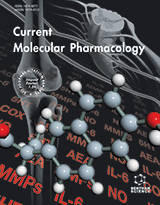Abstract
Smad7 is an inhibitory Smad protein that blocks Transforming Growth Factor-beta (TGF-β) signaling through a negative feedback loop, also capable of mediating the crosstalk between TGF-β and other signaling pathways. Smad7 mRNA and protein levels are upregulated after TGF-β signaling; subsequently, Smad7 protein binds TGF-β type I receptor blocking R-Smad phosphorylation and eventually TGF-β signaling. Because of this inhibitory function, Smad7 can antagonize diverse cellular processes regulated by TGF-β such as cell proliferation, differentiation, apoptosis, adhesion and migration. Smad7 induction by different cytokines, besides TGF-β, is also critical for crosstalk/integration of a variety of signaling pathways, and relevant in the pathology of some diseases. Thus, Smad7 plays a key role in the control of various physiological events, and even in some pathological processes including fibrosis and cancer. This review highlights the main known functions of Smad7 with a particular focus on the relevance that alterations of Smad7 function may have in homeostasis, also describing some Smad7 emerging roles in the development of several human diseases that identify this protein as a potential therapeutic target.
Keywords: ALK5, cancer, fibrosis, Smad, Smad7, TGF, POSTTRANSLATIONAL MODIFICATIONS, SIGNALING PATHWAYS, cell proliferation, apoptosis
Current Molecular Pharmacology
Title: Inhibitory Smad7: Emerging Roles in Health and Disease
Volume: 4
Author(s): Marco A. Briones-Orta, Angeles C. Tecalco-Cruz, Marcela Sosa-Garrocho, Cassandre Caligaris and Marina Macias-Silva
Affiliation:
Keywords: ALK5, cancer, fibrosis, Smad, Smad7, TGF, POSTTRANSLATIONAL MODIFICATIONS, SIGNALING PATHWAYS, cell proliferation, apoptosis
Abstract: Smad7 is an inhibitory Smad protein that blocks Transforming Growth Factor-beta (TGF-β) signaling through a negative feedback loop, also capable of mediating the crosstalk between TGF-β and other signaling pathways. Smad7 mRNA and protein levels are upregulated after TGF-β signaling; subsequently, Smad7 protein binds TGF-β type I receptor blocking R-Smad phosphorylation and eventually TGF-β signaling. Because of this inhibitory function, Smad7 can antagonize diverse cellular processes regulated by TGF-β such as cell proliferation, differentiation, apoptosis, adhesion and migration. Smad7 induction by different cytokines, besides TGF-β, is also critical for crosstalk/integration of a variety of signaling pathways, and relevant in the pathology of some diseases. Thus, Smad7 plays a key role in the control of various physiological events, and even in some pathological processes including fibrosis and cancer. This review highlights the main known functions of Smad7 with a particular focus on the relevance that alterations of Smad7 function may have in homeostasis, also describing some Smad7 emerging roles in the development of several human diseases that identify this protein as a potential therapeutic target.
Export Options
About this article
Cite this article as:
A. Briones-Orta Marco, C. Tecalco-Cruz Angeles, Sosa-Garrocho Marcela, Caligaris Cassandre and Macias-Silva Marina, Inhibitory Smad7: Emerging Roles in Health and Disease, Current Molecular Pharmacology 2011; 4 (2) . https://dx.doi.org/10.2174/1874467211104020141
| DOI https://dx.doi.org/10.2174/1874467211104020141 |
Print ISSN 1874-4672 |
| Publisher Name Bentham Science Publisher |
Online ISSN 1874-4702 |
 47
47
- Author Guidelines
- Bentham Author Support Services (BASS)
- Graphical Abstracts
- Fabricating and Stating False Information
- Research Misconduct
- Post Publication Discussions and Corrections
- Publishing Ethics and Rectitude
- Increase Visibility of Your Article
- Archiving Policies
- Peer Review Workflow
- Order Your Article Before Print
- Promote Your Article
- Manuscript Transfer Facility
- Editorial Policies
- Allegations from Whistleblowers
- Announcements
Related Articles
-
The Role of YY1 in Oncogenesis and Its Potential as a Drug Target in Cancer Therapies
Current Cancer Drug Targets Cancer Vaccines for Hormone/Growth Factor Immune Deprivation:A Feasible Approach for Cancer Treatment
Current Cancer Drug Targets Interleukin-6: A Critical Cytokine in Cancer Multidrug Resistance
Current Pharmaceutical Design Molecular Link Mechanisms between Inflammation and Cancer
Current Pharmaceutical Design Applications of Metabonomics in Pesticide Toxicology
Current Drug Metabolism Reproductive and Endocrine Effects of p-Nonylphenol and Methoxychlor: A Review
Immunology, Endocrine & Metabolic Agents in Medicinal Chemistry (Discontinued) Induced Fit Docking and Automated QSAR Studies Reveal the ER-α Inhibitory Activity of <i>Cannabis sativa</i> in Breast Cancer
Recent Patents on Anti-Cancer Drug Discovery Molecular Biomarkers for Lung Adenocarcinoma: A Short Review
Current Cancer Therapy Reviews Nonsteroidal Aromatase Inhibitors for the Treatment of Breast Cancer: An Update
Anti-Cancer Agents in Medicinal Chemistry Reproductive Toxicology of Environmental Toxicants: Emerging Issues and Concerns
Current Pharmaceutical Design Metabolism and Toxicological Implications of Commonly Used Chemopreventive Drugs Against Breast Cancer/Carcinogenesis
Current Drug Metabolism New Peptidic GnRH Antagonists Offer a Broad Range of Therapeutic Applications
Letters in Drug Design & Discovery The Drug Targeting and Delivery Approach Applied to Pt-Antitumour Complexes. A Coordination Point of View
Current Medicinal Chemistry Stem Cell Therapies
Recent Patents on Regenerative Medicine Prothymosin α and its C-Terminal Immunoreactive Decapeptide Show No Evidence of Acute Toxicity: A Preliminary <i>In Silico</i>, <i>In Vitro</i> and <i>In Vivo</i> Investigation
Current Medicinal Chemistry Potential Strategies for Minimizing Mechanism-Based Inhibition of Cytochrome P450 3A4
Current Pharmaceutical Design Recent Patents on Live Bacteria and their Products as Potential Anticancer Agents
Recent Patents on Anti-Cancer Drug Discovery The Current Role of PET/CT in Radiotherapy Planning
Current Radiopharmaceuticals Prediction and Identification of Krüppel-Like Transcription Factors by Machine Learning Method
Combinatorial Chemistry & High Throughput Screening Advances of AKT Pathway in Human Oncogenesis and as a Target for Anti-Cancer Drug Discovery
Current Cancer Drug Targets


























